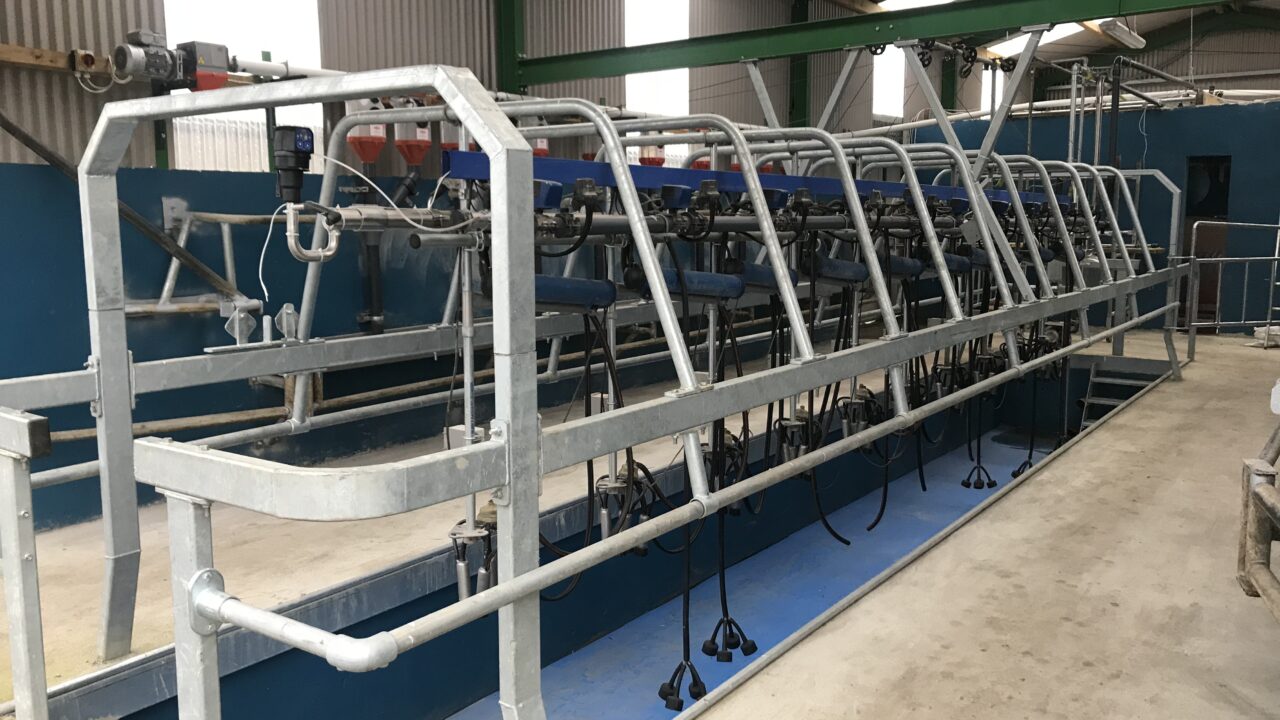Six years ago, Liam and Catherine Millerick – who are farming near Fethard, Co. Tipperary – made the decision to switch their now 124-cow crossbred herd over to once-a-day (OAD) milking.
The pair, who spoke at the OAD milking conference, in the Horse and Jockey Hotel, Co Tipperary, on Wednesday, January 15, said that the biggest driver for them, to make the switch to OAD, was lifestyle.
Outside of calving and breeding, they said they start their day at 6:00am and finish between 9:00am and 9:30am; leaving the rest of the day to plan whatever they like – whether that be farming or non-farming related.
Up until 2012, the couple had been milking a total of 69 cows twice-a-day (TAD). In that year, 394kg of MS/cow were delivered.
However, 2014 was a big year for them, as it was their first full season milking OAD. A total of 96 cows were milked that year which included 40 heifers.
Commenting on this, Liam said: “The first year wasn’t as bad as we expected – despite the herd being made up of 40% heifers – due to a good milk price.
We had exceptional fertility in our first year, with only a 2% empty rate. However, as output has increased over the years, so has our empty rate.
Now in 2019, the herd size has reached 124 cows and milk solids sold have increased to 415kg of MS/cow on just 230kg of meal/cow. The EBI of the herd is €180, placing them in the top 1% of herds nationally.
During his presentation, Liam explained that they “were lucky because they got very good advice when they decided to make the switch to OAD” which he said is “very important when deciding to make the move”.
Their farm itself consists of 66ha, all in the one block, but with separate farmyards – one for rearing young stock and one for the main herd.
It is a relatively low-stocked farm, at just 1.9LU/ha. Only 77kg of N/ha were spread over eligible land in 2019.
Grass grown on the farm in 2018 amounted to 8.2t DM/ha, but this improved in 2019 when the farm grew 11.5t DM/ha.
Farm performance
In 2014 – which was their first full season milking OAD – milk production on the farm took a dip, falling from 379kg MS/cow to 277kg MS/cow. In the same year, somatic cell count (SCC) took a jump from 153,000 to 227,000.
However, since then their average SCC has fallen and stabilised with last year’s figure coming in at 133,000 on average.
From their first year milking OAD, milk solids per cow began to increase year-on-year along with a steady increase in fat and protein percentages. Milk price, they said, has averaged out at about 40.5c/L over their six years on OAD.
In terms of fertility, an improvement can be seen in the calving interval of the herd moving from TAD to OAD. Catherine also noted that the herd has been consistently achieving over 90% calved-in-six-weeks since making the move.
Taking a look at profit monitor data, when comparing the pair’s figures to the top 25% and the average, their performance is excellent.
Variable costs are low, potentially influenced by the low-stocking rate. Fixed costs are also low, considering the investments in infrastructure over the years.
A new shed – including a slatted tank, calving area and store – along with kennels were installed in 2016 and in 2019 a new bridge was installed and machinery and ‘MooMonitors’ purchased.
Challenges along the way
Liam admitted that the challenges they have met along the way were “not much different than those you might meet as a TAD herd”.
- 2014 – stray electrical currents in the milking parlour and SCC issues;
- 2015 – Mycoplasma Bovis outbreak;
- 2016 – poor milk price;
- 2017 – unknown virus in the cows;
- 2018 – drought;
- 2019 – weak milk price and, for the first time, they found finding buyers for the bull calves was a problem.
In the early years, Liam explained that they were also culling up to 15%.
Having the right cow for the system
Catherine stated that “the key to an OAD system is having suitable cows”.
Over time the couple have weeded out the unsuitable cows and focused on getting, what they feel is, the best cow for their system.
They both agreed that crossbred cows were the most suitable type of cow, with Liam saying:
Jersey crossbred cows, we feel, work best on OAD.
Some of the bulls used in 2019 include: Riverview and Dexter (JE5061); Cresent Excell Misty (JE4516); Glen Koru Beckon (JE4827); Glen Koru Epic (JE4509); Bradene Pas Triplestar (JE4289); Kilteskin Ace (FR2050); and Priests Sierra (ZSP).
In terms of milk production targets, Catherine said: “By first lactation we want them to reach 300kg of MS/cow, by second lactation we want them to reach 400kg of MS/cow and by third lactation we want them to reach 500kg of MS/cow – or near to it anyways.”


